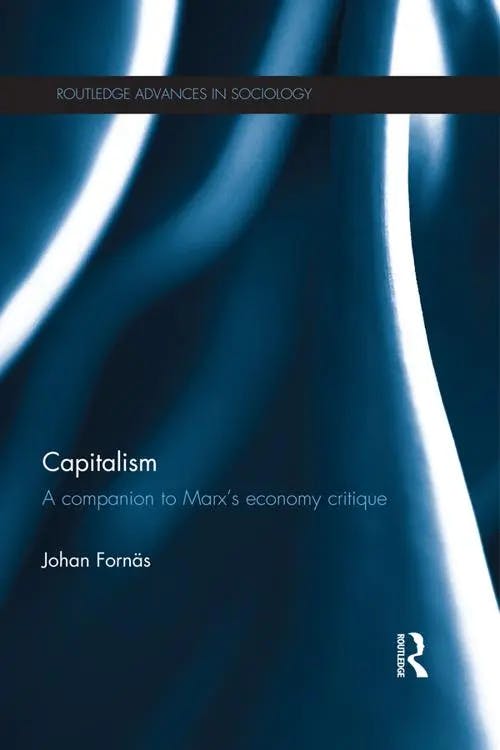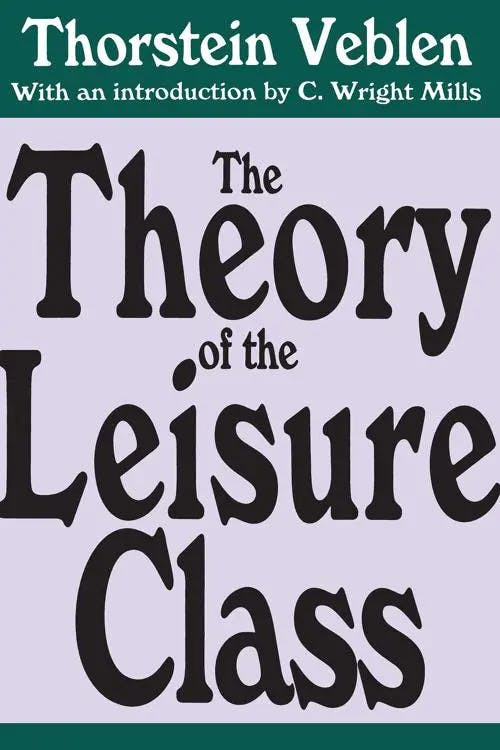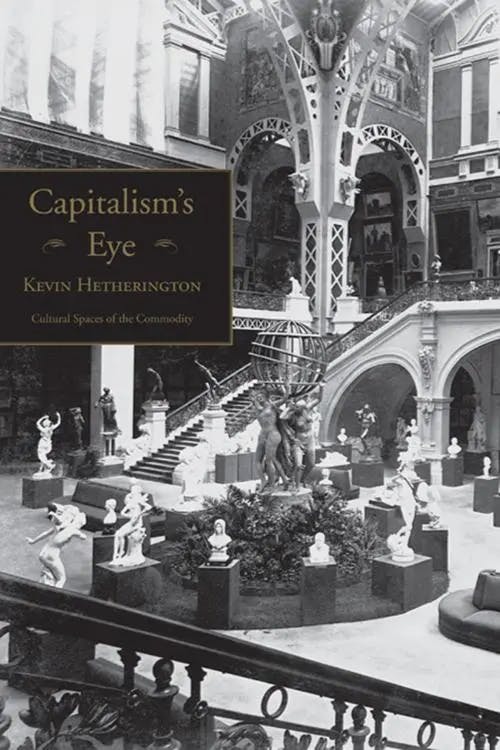What is Commodity Fetishism?
PhD, English Literature (Lancaster University)
Date Published: 08.03.2023,
Last Updated: 07.02.2024
Share this article
How does Marx define Commodity Fetishism?
According to Karl Marx’s Das Kapital (1867), in a capitalist society, a commodity appears as if by magic to the consumer. This miraculous appearance, crucially, is divorced from the labour which produced it. This process is what Marx calls commodity fetishism.
Commodities that are fetishised in such a manner are not viewed in terms of their ‘use value’ (i.e. their raw materials and practical application), but are seen only in terms of their ‘exchange value’ (i.e. how much a product is deemed to be materially worth under capitalism). It is economic and social relationships that determine an exchange value, as opposed to the inherent value of the labour and materials. As Marx writes,
[t]he mystical character of commodities does not originate… in their use-value. Just as little does it proceed from the nature of the determining factors of value. (2012 [1867])
Karl Marx, Friedrich Engels
[t]he mystical character of commodities does not originate… in their use-value. Just as little does it proceed from the nature of the determining factors of value. (2012 [1867])
Commodity fetishism can apply to both objects and money itself, which is likewise granted a value beyond that of its material properties.
We can see this in our modern society, particularly with the emergence of advertising. Take perfume, for example. Perfume is often advertised using popular and attractive celebrities; it is rarely described in terms of its use-value i.e. what it actually smells like. Similarly, sports brands use celebrated athletes to promote their products. By attaching these celebrities to products, they are granted a magical quality; these commodities begin to signify success, glamour and prestige. Under commodity fetishism, it does not matter about the smell of the perfume or the quality of the shoe; all that matters are the values ascribed onto it by the potential consumer.
Illusion and the magical qualities of the commodity
To what degree, then, are consumers aware of the illusory quality of the commodity? Are they conscious that a commodity, or even money, does not innately contain qualities that grant it an additional, abstract value? As Johan Fornäs illustrates in Capitalism: A Companion to Marx’s Economy Critique (2014), the fetishism of commodities has the power to make that which is abstract, a reality. He writes that,
[j]ust as essence and the forms in which it appears are equally real, the abstract and the concrete are also equally real – on the condition that the abstractions are reasonable. (2014)
Johan Fornäs
[j]ust as essence and the forms in which it appears are equally real, the abstract and the concrete are also equally real – on the condition that the abstractions are reasonable. (2014)
This corresponds with what Marx demonstrates in Capital, wherein he discusses the reducing of human labour to its exchange value: ‘This reduction appears to be an abstraction, but it is an abstraction which is made everyday in the social process of production’ (2012 [1867]) .
Put simply, though a consumer may be well aware of labour inequality that goes into the making of the commodity, they do not ground this in their everyday reality. By distancing themselves, they are able to still view commodities as these magical, exciting objects which lack origin. As Marx suggests, this fetishised image of the commodity, and its ability to have value outside of its usefulness, becomes real due to a common consensus under capitalism that the object has these abstract qualities.
Marx further explains the exchange-value of commodities using the analogy of a table:
The form of wood, for instance, is altered, by making a table out of it. Yet, for all that, the table continues to be that common, everyday thing, wood. But, so soon as it steps forth as a commodity, it is changed into something transcendent. It not only stands with its feet on the ground, but, in relation to all other commodities, it stands on its head, and evolves out of its wooden brain grotesque ideas, far more wonderful than “tableturning” ever was. (Capital, 2012 [1867])
Marx here does not suggest the consumer perceives the table as having mystical qualities, but states that the table ‘is changed into something transcendent’. The consumer, however, mistakes the material value of the item, the wood for the table, for something which has an inherent social value, that the commodity can transform the way their image is represented to the world.
The qualities granted to everyday objects which determine their exchange-value, is further discussed by theorist Slavoj Žižek, in The Sublime Object of Ideology (1989). Žižek explains that this perceived value is not an illusion, but a misrecognition:
When individuals use money, they know very well that there is nothing magical about it – that money, in its materiality, is simply an expression of social relations… The problem is that in their social activity itself, in what they are doing, they are acting as if money, in its material reality, is the immediate embodiment of wealth as such. They are fetishists in practice, not in theory. What they ‘do not know’, what they misrecognize, is the fact that in their social reality itself, in their social activity – in the act of commodity exchange – they are guided by the fetishistic illusion. (2019 [1989])
Slavoj Žižek
When individuals use money, they know very well that there is nothing magical about it – that money, in its materiality, is simply an expression of social relations… The problem is that in their social activity itself, in what they are doing, they are acting as if money, in its material reality, is the immediate embodiment of wealth as such. They are fetishists in practice, not in theory. What they ‘do not know’, what they misrecognize, is the fact that in their social reality itself, in their social activity – in the act of commodity exchange – they are guided by the fetishistic illusion. (2019 [1989])
For Žižek, consumers are aware that a commodity or money is not real, aware that it does not hold value except for that which they place upon it. However, their actions, their participation in consumption indicates that they are drawn in by the illusion. For example, the consumer may be well aware that they do not need a new mobile phone; they may be conscious that the market is attempting to sell the image of success, style or wealth. However, this knowledge, more often than not, does not dissuade the consumer from buying a new phone. Commodity fetishism is not an illusion; the mystical qualities of the product are made real in a world which is dominated by commodities.
The fetishism of commodities and conspicuous consumption
Thorstein Veblen’s The Theory of the Leisure Class (1899) furthers our insight into the fetishism of commodities by looking at the consumption habits of the wealthier classes. Though Veblen does not use the term ‘commodity fetishism’, his discussions of the motivations behind luxurious purchases indicate a fetishisation of commodities in the upper echelons. Veblen refers to ‘conspicuous consumption’, which describes the purchasing and displaying of commodities to indicate social status. Conspicuous consumption also extends to all types of lavish spending that is done to ostentatiously exhibit one’s wealth.
Veblen’s discussion of fashion in relation to conspicuous consumption further reinforces what Marx writes on the mystical quality of objects superseding their use-value. Veblen writes that,
The need of dress is eminently a “higher” or spiritual need. This spiritual need of dress is not wholly, nor even chiefly, a naïve propensity for display of expenditure. The law of conspicuous waste guides consumption in apparel, as in other things, chiefly at the second remove, by shaping the canons of taste and decency…We find things beautiful, as well as serviceable, somewhat in proportion as they are costly. (2017 [1899])
Thorstein Veblen
The need of dress is eminently a “higher” or spiritual need. This spiritual need of dress is not wholly, nor even chiefly, a naïve propensity for display of expenditure. The law of conspicuous waste guides consumption in apparel, as in other things, chiefly at the second remove, by shaping the canons of taste and decency…We find things beautiful, as well as serviceable, somewhat in proportion as they are costly. (2017 [1899])
Luxurious clothing items, Veblen identifies, are evidence of not only ‘pecuniary success’, but also show that ‘the wearer is not engaged in any kind of productive labor’ (2017 [1899]). The commodity, therefore, serves to reinforce class divides.
Despite its ornateness and expense, the dress remains, in actuality, no more than an assemblance of materials. Commodity fetishism, however, elevates the value of the dress to something which is an indicator of wealth, occupation (or lack of) and status. Far removed from the materials or labour that produced it, the dress takes on this mystical quality under capitalism, granting the wearer esteem among their peers. As Veblen points out, the dress is a ‘spiritual need’ not a practical necessity.
Cultural commodities, the culture industry and the fetishisation of art
Work on commodity fetishism in the twentieth and twenty-first centuries has turned towards looking at different forms the commodity may take. Whilst Marx’s initial discussion of commodity fetishism focused on physical, tangible objects removed from their origins of production, later theorists have applied his work to other cultural products, such as different forms of art & media.
In Theodor Adorno and Max Horkheimer’s Dialectic of Enlightenment (1947), they discuss the emergence of ‘The Culture Industry’ – a phrase used to describe the standardisation of goods under capitalism, used in order to control the consumer (see our introduction to this topic, titled ‘What is The Culture Industry?’). Here, they analyse how the culture industry is inextricably linked with, and to a degree sustained by, commodity fetishism. They write that,
For consumers the use value of art, its essence, is a fetish, and the fetish—the social valuation which they mistake for the merit of works of art—becomes its only use value, the only quality they enjoy…Art becomes a species of commodity, worked up and adapted to industrial production, saleable and exchangeable. (2002 [1947])
Max Horkheimer, Theodor W. Adorno
For consumers the use value of art, its essence, is a fetish, and the fetish—the social valuation which they mistake for the merit of works of art—becomes its only use value, the only quality they enjoy…Art becomes a species of commodity, worked up and adapted to industrial production, saleable and exchangeable. (2002 [1947])
Everything under capitalism, therefore, is not valued based on its labour or material cost, but how much value it is ascribed by society more broadly. Art, they argue, gains its value through a social valuation – a general acceptance of how much a piece is worth. It is no longer about the actual work of art, its quality or the artist who produced it, it is valuable as far as the art connoisseur deems it valuable. Art, therefore, becomes another commodity, existing for the purposes of exchange and transaction.
Fetishisation of the spectacle through mass media
Much like the work of Adorno and Horkheimer, Guy Debord in The Society of the Spectacle (1988) focused on commodity fetishism’s furthering of a docile and compliant society. In this work, Debord explains his concept of the spectacle – the method by which capitalism controls and pacifies the masses. This method often takes the form of mass media which influences us heavily, guiding our consumption, aspirations and desires. As Francis Mulhern writes in ‘Critical Considerations on the Fetishism of Commodities’ (2007), Debord,
was clearly indebted to the Marxian analysis of commodity fetishism, but the concept-trope of the spectacle represented a drastic upping of the critical stakes, in effect denoting any aspect of contemporary social relations-capitalist or not, indeed–that works to induce passivity in the subject population.
The passive nature of the consumer makes it all the more easy to sell them products they do not need. Debord shows that in capitalist societies, typically all of our basic needs (food, water, shelter) are met; in order for capitalism to continue thriving, the consumer industry converts ‘wants’ into ‘needs’. This, Debord, refers to as ‘augmented survival’ (Debord, 2020 [1988]).
Augmented survival means that the consumer places vital necessity on unnecessary products,
The real consumer thus becomes a consumer of illusion. The commodity is this illusion, which is in fact real, and the spectacle is its most general form. (Debord, 2020 [1988])
In other words, the spectacle (via mass media) creates desires based upon illusion. For example, advertising may show a new sports car and indicate that this may present the image of success. This is illusionary as no car can make someone successful. However, as this image of the car and its relationship to success has been disseminated via mass media throughout wider society, it becomes accepted that the commodity (the car) has this magical property. As it is accepted, the illusion becomes real.
Even at a time when we are aware of the origins of products, their material nature and the labour that produces them becomes irrelevant. As Debord writes,
The world the spectacle holds up to view is at once here and elsewhere; it is the world of the commodity ruling over all lived experience. The commodity world is thus shown as it really is, for its logic is one with men’s estrangement from one another and from the sum total of what they produce. (2020 [1988])
As the labourer becomes alienated from what they produce, likewise the consumer detaches themselves from the origins of production lest the commodity will lose its allure. As Kevin Hetherington explains inCapitalism’s Eye: Cultural Spaces of the Commodity(2011),
the fetishistic spell that the commodity casts’ makes ‘people passive, isolated, and immobile and of the commodity then becoming their way of connecting with a sense of community, action, and self.
Kevin Hetherington
the fetishistic spell that the commodity casts’ makes ‘people passive, isolated, and immobile and of the commodity then becoming their way of connecting with a sense of community, action, and self.
Criticisms of commodity fetishism
One of the most cited critics of Marx’s concept of commodity fetishism is French Marxist philosopher Louis Althusser. Althusser’s primary issue is that commodity fetishism fails to provide an explanation for the real cause of exchange value i.e. how commodity fetishism occurs within society. As Althusser writes in Philosophy of the Encounter,
I do not think that it makes any sense at all to talk about the fetishism of the commodity, as if the commodity could be the source [l’auteur] ‘of’ fetishism. No doubt it does make some sense to us the term fetishism, but only on condition that we bring fetishism into relation with what actually causes it, without telling ourselves the fairy tales that Marx inflicts on us in order to fabricate the evidence he needs. (2006)
Althusser’s main contention is that the productive mechanisms of fetishism are not identified by Marx. Therefore, as Althusser highlights, there is no empirical evidence from Marx on how commodities come to be seen in terms of their exchange-value.
Much of the criticism towards Marx’s writing on commodity fetishism echoes Althusser’s sentiments, in particular focusing on Marx’s lack of explanation as to how ideologies present themselves in capitalist societies. Ideology is a term used by Marx to describe the dominant ideas and beliefs within society that are used to justify unequal power relations between the working classes and the ruling classes. Marx believes commodity fetishism arises out of these dominant ideologies.
Criticism of commodity fetishism has not only been levied at Marx, but those who came after, such as Debord. Olivier Frayssé in ‘Gazing at “Fetishes” 2.0: Using the Spectacle Concept to Understand Consumer Cultures in the Age of Digital Capitalism’ (2019), finds that some work applying Marx’s theory of commodity fetishism, such as Debord’s, is too far removed from the original concept. Frayssé writes that,
This détournement of the Marxist concept of commodity fetishism is problematic, since the original concept has nothing to do with adoration of commodities, brands, or their images. It points to a Debordian vision of the connection between production and consumption that lacks both nuance and any real care for the actual situation of workers, their lives, their organization, which were at the heart of Marx’s life and work. (2019)
Frayssé argues here that the core of Marxist theory, the alienation and subjugation of the labourer, is missing in contemporary analysis of the culture industry. Commodity fetishism is concerned with abstraction from the labour processes. As such, it could be argued that theories which overlook labour processes are not fully engaged with Marx’s concept of commodity fetishism.
Commodity fetishism of the early 21st century
Commodity fetishism, as a theory, continues to be topical; illuminating our behaviours in a modern world where consumption is easier than ever before. Mulhern attests to its current relevance, stating that,
It matters today, when commodifying processes continue to extend their social reach, when it seems necessary to speak not only of the range and degrees of commodification but of intensities of commodification, when capitalism stands ready, at last, to take possession of the entire planet. A theory that cannot account for the culture of commodities is hardly a cultural theory at all.(2007)
Robert Kurz further suggests that commodity fetishism is still present, but in new forms through the emergence of digital media and the virtual world. In ‘The Culture Industry and the 21st Century’ (2010), he states that:
The gradual disappearance of the world under avalanches of data situates the real fetishistic appearance of the commodity on a different plane, as the universal field of mechanically produced games, in which not only objects but also people are duplicated and in their virtualization supply themselves with an apparent life that corresponds to their real nullity and lack of dignity. The virtual space is haunted by avatars in the form of the spirits of the living dead who in reality vegetate in the concentration camps of capital valorization and of the administration of labor. (2010)
Marx’s theory of commodity fetishism, though derided by Althusser and his peers as an irrelevant footnote in Capital, continues to be turned to in our digital age – and for good reason. Though Marx could not have envisioned our relationship with commodities in an increasingly consumer-driven society, many of his comments regarding the illusory impact of commodities can still be seen today. The evidence of commodity fetishism is evident through the detachment of the consumer from their products. For instance, there is widespread knowledge of the sweatshops which underpin the fast fashion industry, yet consumers continue to purchase from repeat-offender retailers. Commodity fetishism can also be seen in the ostentatious displays of celebrity wealth, which rivals that of the nineteenth-century wealthy classes Veblen discusses. Though it can be argued commodity fetishism has transformed beyond all recognition in the 21st century, the core arguments of Marx and his contemporaries can still be readily applied to our consumer landscape today.
Further Commodity Fetishism Resources & Reading on Perlego
- Lysandrou, P (2018).Commodity: The Global Commodity System in the 21st Century. Routledge. https://www.perlego.com/book/1476770/commodity-the-global-commodity-system-in-the-21st-century-pdf
- McNeill, D. (2020) Fetishism and the Theory of Value: Reassessing Marx in the 21st Century. Palgrave Macmillan. https://www.perlego.com/book/3482128/fetishism-and-the-theory-of-value-reassessing-marx-in-the-21st-century-pdf
- Meszaros, I (2017). Aspects of History and Class Consciousness. Routledge. https://www.perlego.com/book/1640303/aspects-of-history-and-class-consciousness-pdf
- Taussig, M. T. (2010). The Devil and Commodity Fetishism in South America. The University of North Carolina Press https://www.perlego.com/book/538607/the-devil-and-commodity-fetishism-in-south-america-pdf
What is Commodity Fetishism in simple terms?
What is an example of Commodity Fetishism?
Who coined the term Commodity Fetishism?
Bibliography
Althusser, L. 2006. Philosophy of the Encounter Later Writings, 1978-87. Verso.
https://kokkinogati.files.wordpress.com/2015/05/philosophy-of-the-encounter.pdf
Bennett, J. (2001) ‘Commodity Fetishism and Commodity Enchantment’. The John Hopkins University Press. https://muse.jhu.edu/article/32617/summary
Debord, G. 2020 [1988]. The Society of the Spectacle. Zone Books. https://www.perlego.com/book/1636424/the-society-of-the-spectacle-pdf
Dimoulis, D and John Milios. (2014) ‘Commodity Fetishism vs. Capital Fetishism: Marxist Interpretations vis-à-vis Marx’s Analyses in Capital’. Historical Materialism. https://brill.com/view/journals/hima/12/3/article-p3_1.xml?casa_token=oigZrUWji_4AAAAA:0qlqL–pdmyy9bgxSbS7jiTWQcpW7aQOgjCQSIAuQEzV8CIxZZj_iilCWK1xFw88mkJGkSVscA
Fornäs, J. (2014) Capitalism: A Companion to Marx’s Economy Critique. Routledge. https://www.perlego.com/book/1610866/capitalism-a-companion-to-marxs-economy-critique-pdf
Frayssé, O. (2019). ‘Gazing at “Fetishes” 2.0: Using the Spectacle Concept to Understand Consumer Cultures in the Age of Digital Capitalism.’ French Journal of Media Studies.https://journals.openedition.org/inmedia/1902
Hetherington, K. (2011) Capitalism’s Eye: Cultural Spaces of the Commodity. Routledge.
https://www.perlego.com/book/1609657/capitalisms-eye-cultural-spaces-of-the-commodity-pdf
Horkheimer, M and Adorno, T. (2002) Dialectic of Enlightenment. Stanford.
https://www.perlego.com/book/745055/dialectic-of-enlightenment-pdf
Kurz, R. (2010) ‘The Culture Industry and the 21st Century’. Libcom.
https://libcom.org/article/culture-industry-21st-century-robert-kurz
Marx, K. 2012 [1867] Das Kapital: A Critique of Political Economy. Gateway Editions. https://www.perlego.com/book/784600/das-kapital-a-critique-of-political-economy-pdf
Mulhern, F. (2007) ‘Critical Considerations on the Fetishism of Commodities’. The John Hopkins University Press.
https://www.jstor.org/stable/30029565#metadata_info_tab_contents
Veblen, T. 2017 [1899] The Theory of the Leisure Class. Routledge.
https://www.perlego.com/book/1578663/the-theory-of-the-leisure-class-pdf
Wayne, M. (2005) ‘Fetishism and Ideology: A Reply to Dimoulis and Milios’. Historical Materialism. https://brill.com/view/journals/hima/13/3/article-p193_7.xml
Žižek, S. 2019 [1989] The Sublime Object of Ideology. Verso.
https://www.perlego.com/book/920073/the-sublime-object-of-ideology-pdf
PhD, English Literature (Lancaster University)
Sophie Raine has a PhD from Lancaster University. Her work focuses on penny dreadfuls and urban spaces. Her previous publications have been featured in VPFA (2019; 2022) and the Palgrave Handbook for Steam Age Gothic (2021) and her co-edited collection Penny Dreadfuls and the Gothic was released in 2023 with University of Wales Press.






